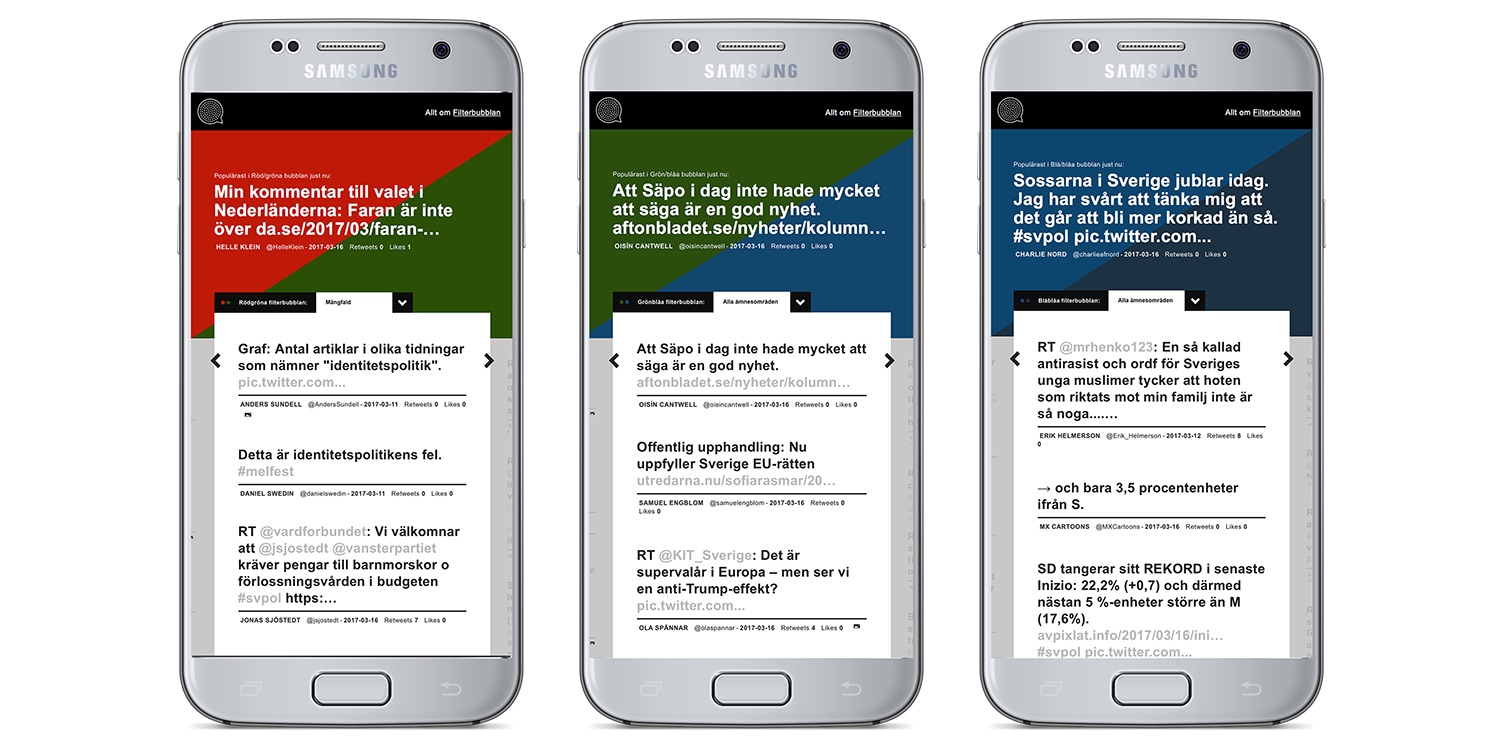
Per Grankvist, Swedish author and expert on sustainability issues, became interested in filter bubbles in the summer of 2016, when he recreated the filter bubbles around the US election campaigns to better understand what motivated people to vote for Trump.
"I was trying to recreate the world that they have online because everyone who elects someone does it because it's completely logical and rational to them," he told Journalism.co.uk.
After the end of the US election campaign, Grankvist started to look into the filter bubbles that began to form around political debate in Sweden.
On 21 March, he launched Filterbubblan, a tool that offers a look at the three political bubbles that have formed on Swedish social media: the left (marked by the colours red and green), centre (green and blue), and right and alt-right (blue and dark blue).
Grankvist, op-ed columnist at daily newspaper Sydsvenskan, created Filterbubblan (The Filter Bubble) in collaboration with Great Works, partly inspired by the Blue Feed, Red Feed project from The Wall Street Journal.
The tool automatically pulls in text-only tweets from around 70 accounts in each bubble at the time of writing, presented without additional commentary.
"I didn't want to tell people how they should interpret the bubbles, I didn’t want to provide people with that filter."
The bubbles were created using Twitter’s algorithm as a starting point. The Twitter accounts of the politicians at the centre of each bubble were first to be added to the list, and then related accounts would be added once they had been suggested by Twitter as related feeds more than a couple of times. There is no human editor curating what is displayed in each bubble.

"Since we've done it through the Twitter algorithm, there is no one who can say this is biased. So that was very important to me to make this very standalone, non-partisan.
"It is, I think, a new way of data journalism where instead of writing about something to get people to feel and think and reflect, you actually expose them to something that will make them feel, think and react."
The tool, launched 18 months before the next general election in Sweden, also uses semantic analysis to sort tweets based on the subject they address: housing, crime, defense, immigration, gender equality, environment, diversity, taxes, education or healthcare.
The tweets included are intentionally text-only, as Grankvist wanted to focus on showcasing the language used by people in each bubble.
As well as hoping to enable the public to break through their own bubble and experience the discourse in other people's feeds, Grankvist hopes the tool will also help journalists better understand the phenomenon.
Grankvist, who also wrote an essay called 'A world of filter bubbles' published in Swedish in October 2016, believes journalists are not very aware of the effect.
Access to Filterbubblan is free, and the tool could be replicated in different countries around the world – Grankvist is open to partnering with newsrooms to recreate filter bubbles in other countries.
"My intention is not only to educate the general public, but also to educate journalists and get them to understand that they are also in a filter bubble. By using this tool you can actually start making sense of it all."
Free daily newsletter
If you like our news and feature articles, you can sign up to receive our free daily (Mon-Fri) email newsletter (mobile friendly).
Related articles
- Six self-care tips for journalists to stay sane during the US election
- RISJ Digital News Report 2024: Three essential points for your newsroom
- Seven tips for using LinkedIn as a freelance journalist
- Journalists are happy to be disconnecting from platforms, should news organisations be worried?
- 40 essential newsletters every journalist should read









